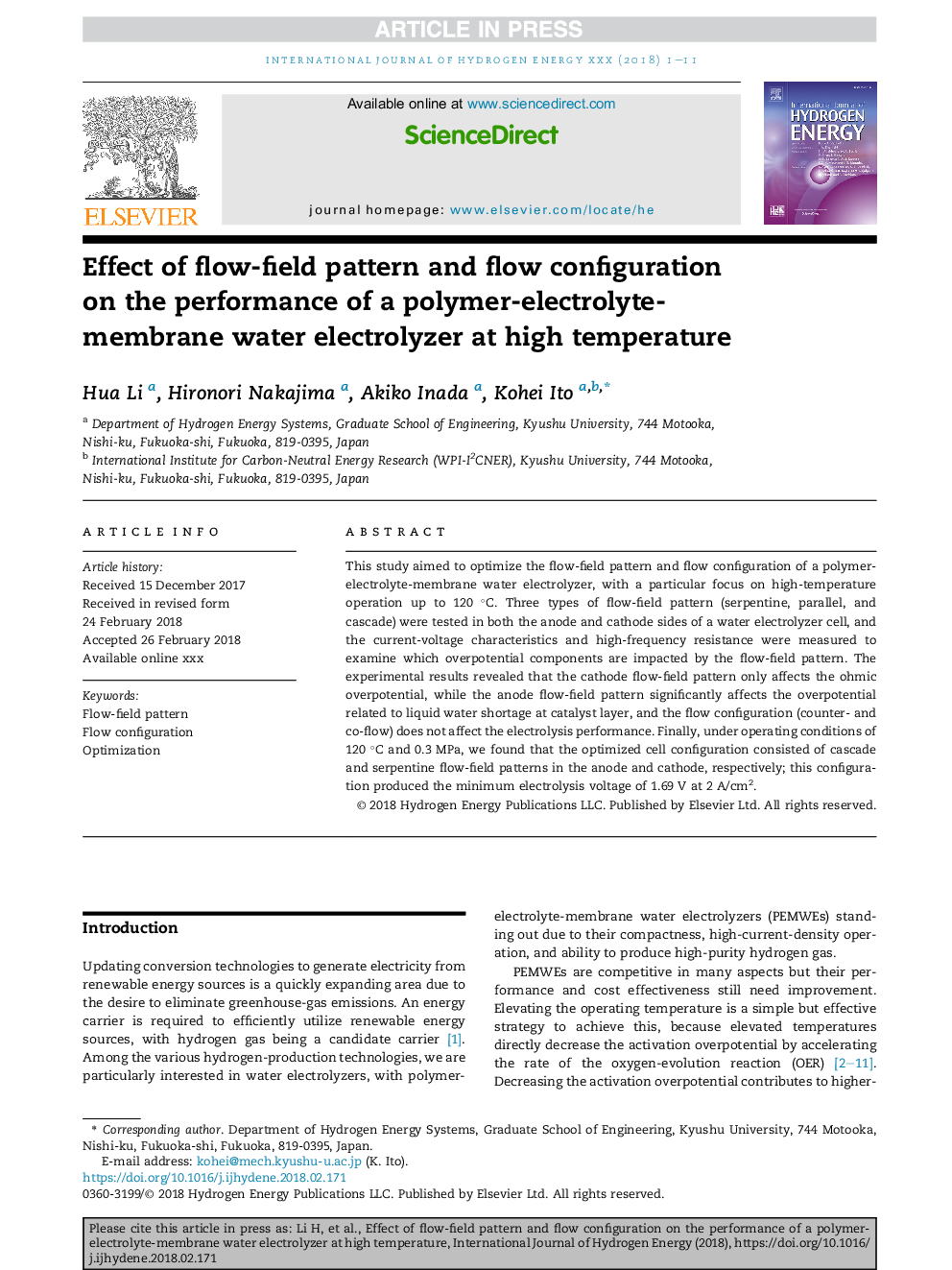| Article ID | Journal | Published Year | Pages | File Type |
|---|---|---|---|---|
| 7706166 | International Journal of Hydrogen Energy | 2018 | 11 Pages |
Abstract
This study aimed to optimize the flow-field pattern and flow configuration of a polymer-electrolyte-membrane water electrolyzer, with a particular focus on high-temperature operation up to 120 °C. Three types of flow-field pattern (serpentine, parallel, and cascade) were tested in both the anode and cathode sides of a water electrolyzer cell, and the current-voltage characteristics and high-frequency resistance were measured to examine which overpotential components are impacted by the flow-field pattern. The experimental results revealed that the cathode flow-field pattern only affects the ohmic overpotential, while the anode flow-field pattern significantly affects the overpotential related to liquid water shortage at catalyst layer, and the flow configuration (counter- and co-flow) does not affect the electrolysis performance. Finally, under operating conditions of 120 °C and 0.3 MPa, we found that the optimized cell configuration consisted of cascade and serpentine flow-field patterns in the anode and cathode, respectively; this configuration produced the minimum electrolysis voltage of 1.69 V at 2 A/cm2.
Keywords
Related Topics
Physical Sciences and Engineering
Chemistry
Electrochemistry
Authors
Hua Li, Hironori Nakajima, Akiko Inada, Kohei Ito,
